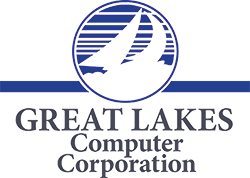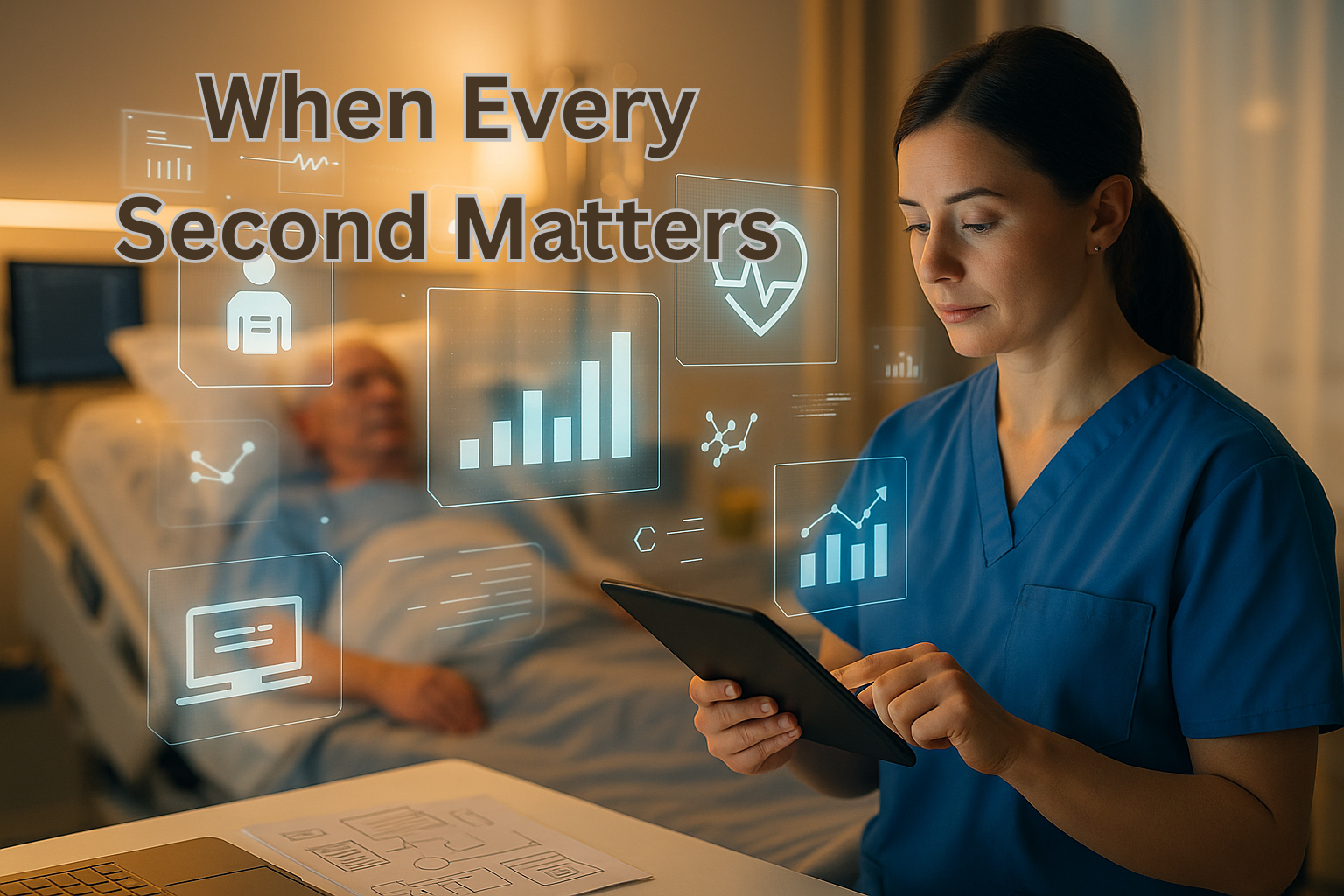The Human Side of Healthcare IT
It’s 9:00 a.m. in a busy clinic. The waiting room is full, phones are ringing, and the nurse is ready to check in patients. But then, the electronic health record (EHR) system crashes.
Appointments stall. Patients wait. Frustration grows.
In healthcare, every second matters. Technology is the heartbeat of your practice — managing schedules, storing records, transmitting prescriptions, and protecting patient data.
When it works, it’s invisible. When it fails, everything stops.
That’s why IT for healthcare can’t just be “good enough.”
Great Lakes Computer (GLC) understands that in medicine, technology doesn’t just support the mission — it is the mission. As they noted in Securing Your Mission: Why Nonprofits Need Strong Cybersecurity Now More Than Ever, protecting critical systems means protecting people’s trust. The same principle applies here.
The High Stakes of Downtime in Healthcare
In most businesses, downtime costs money.
In healthcare, downtime can cost lives.
When your EHR system or network goes down, it doesn’t just inconvenience staff — it can delay diagnoses, prescriptions, or emergency responses.
Real impacts of IT downtime in healthcare:
- Missed or delayed patient care
- Lost access to records or imaging
- Scheduling disruptions
- HIPAA violations if data is mishandled during recovery
In Accelerating Business Success: The Importance of a Prompt IT Managed Service Provider Response, GLC stresses that response time is critical. In healthcare, that urgency multiplies.
Every minute of uptime counts.
The Cyber Threat Epidemic in Medicine
Hackers see healthcare as the ultimate prize: rich patient data, financial info, and the ability to hold systems hostage for ransom.
As GLC highlights in Why SMBs Can’t Afford to Treat Cybersecurity as an Afterthought, cybercriminals no longer discriminate by business size. Small medical offices are prime targets because they handle valuable data but often lack robust defenses.
Top threats facing healthcare practices:
- Ransomware – Systems locked, demanding payment to restore access (The Ransomware Tide Is Rising).
- Phishing attacks – Staff tricked into giving login credentials (Phishing Emails: Would You Take the Bait?).
- Insider risks – Accidental or intentional leaks by employees (Insider Risk Management and Data Protection).
- Unsecured devices – Unpatched tablets, printers, and IoT medical equipment.
The outcome? Breaches can cost millions in fines, lawsuits, and lost patient confidence.
🩺 GLC Tip:
Use layered protection: endpoint security (SentinelOne), email filtering, MFA, and regular staff training (Build a Human Firewall for Your Business).
HIPAA: More Than Just Paperwork
HIPAA compliance isn’t optional — and it’s not just about checking boxes. It’s about showing patients you take their privacy seriously.
In Beyond Compliance: Why Professional Service Firms Need a Proactive Cybersecurity Strategy, GLC explains that compliance must be proactive. The same logic applies in healthcare — compliance should prevent problems, not react to them.
Key HIPAA IT focus areas:
- Data encryption (in transit and at rest)
- Secure backups
- Access control and user logs
- Email and device security policies
- Vendor compliance checks
GLC helps healthcare organizations stay audit-ready with documented security processes and compliant infrastructure support.
IT Hardware & Devices in Medical Environments
Healthcare relies on dependable hardware — from front-desk printers to lab PCs to diagnostic servers.
GLC’s IT Hardware Maintenance and Repair keeps clinics running smoothly by maintaining essential devices and minimizing downtime.
Common device challenges:
- Aging printers are causing prescription delays
- Workstation crashes interrupting charting
- Unsecured IoT medical equipment
- Data loss due to unmonitored backups
By standardizing hardware and adding proactive maintenance, healthcare practices can focus on patients — not error codes.
Data Backup and Continuity: Lifesaving Redundancy
If your EHR goes down, do you know how long it would take to restore?
GLC’s Disaster Protection: Why Your Business Needs BCDR Now explains why backup isn’t enough — you must test recovery.
For healthcare, that means:
- Daily encrypted backups
- Cloud redundancy
- Offsite data replication
- Quarterly recovery testing
- Written disaster recovery playbooks
In an emergency, a well-tested backup plan can mean the difference between a one-hour disruption and a week-long crisis.
Managed IT: The Prescription for IT Overload
Most medical offices can’t afford a full-time IT team — but they can’t afford downtime either. That’s where managed IT services come in.
As outlined in 3 Reasons SMBs Need Managed Service Providers, MSPs like GLC deliver:
- 24/7 monitoring
- Proactive updates and patching
- Fast helpdesk support
- Predictable costs
That’s peace of mind for doctors, nurses, and administrators alike.
The Cloud in Healthcare: Accessible, Secure, Essential
Telehealth, cloud EHRs, and remote teams have made cloud adoption inevitable.
GLC’s Cloud Computing in 2021 highlights how hybrid solutions combine security and accessibility.
Benefits:
- Secure remote access to patient data
- Collaboration between clinics and labs
- Scalable storage for imaging and records
But security is key:
- Encrypt all transmissions
- Control user access
- Log every login and data change
Cyber Insurance and Risk Management
Cyber insurance used to be simple. Now, insurers require proof of strict security measures before offering coverage.
In Cyber Insurance Is Becoming Harder to Obtain, GLC details how the landscape has changed — and why healthcare practices must meet higher standards to qualify.
Best Practices:
- Multi-factor authentication
- Documented incident response plan
- Regular third-party risk assessments
- Endpoint protection logs
Staff Training: Your First Line of Defense
Technology can only do so much. People are the real defense.
GLC’s Build a Human Firewall for Your Business reinforces this point — staff training dramatically reduces security incidents.
Healthcare training essentials:
- Recognize phishing attempts
- Handle PHI correctly
- Lock computers when unattended
- Report incidents immediately
Your Healthcare IT Roadmap
- Assess risks – Identify gaps in hardware, software, and security.
- Strengthen infrastructure – Replace aging devices and standardize systems.
- Protect data – Encrypt, back up, and monitor constantly.
- Train your team – Continuous cybersecurity awareness.
- Partner with experts – GLC handles compliance and uptime so you can focus on care.
- Plan for growth – Scalable systems to handle telehealth, expansion, and new regulations.
Final Word
In healthcare, technology is as vital as medicine.
Your IT systems store patient histories, enable treatment, and protect lives. That’s why healthcare practices can’t afford outdated networks, untested backups, or insecure systems.
Great Lakes Computer helps healthcare professionals stay compliant, resilient, and ready for anything — combining proactive IT management, cybersecurity, and reliable support.
Because your focus should be on patients, not passwords.
Explore more:

